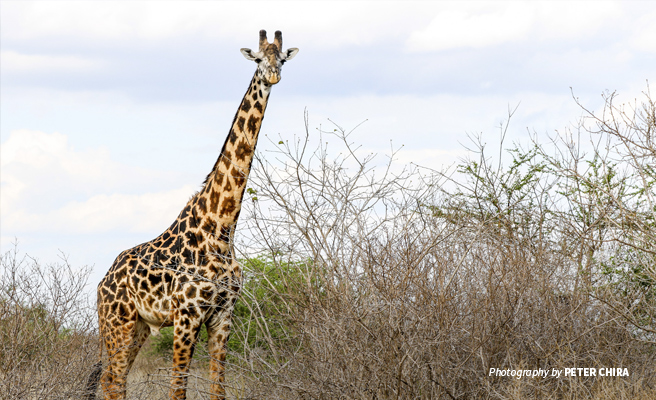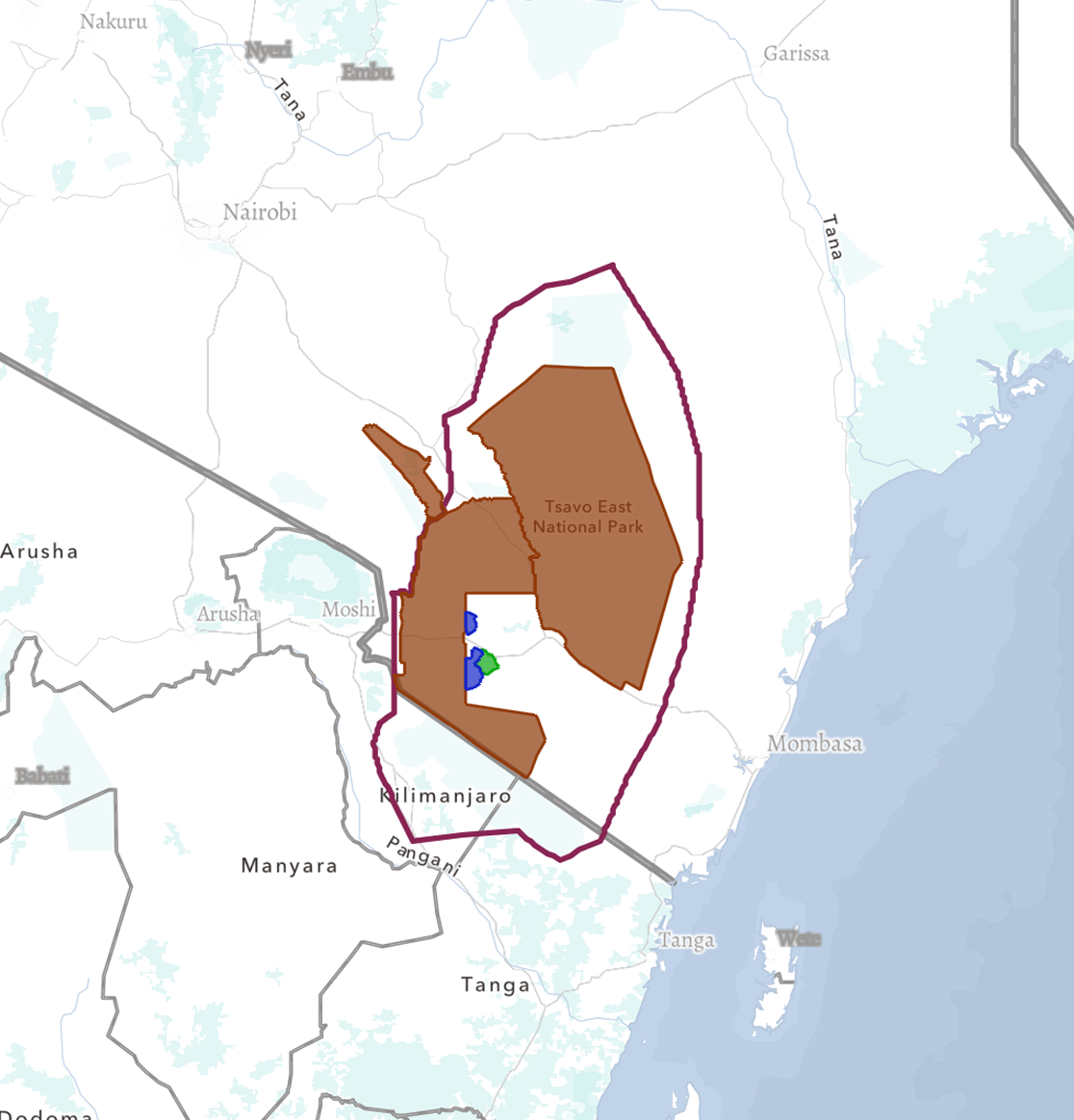Mapping a Future for Maasai Giraffes in the Tsavo–Mkomazi Landscape

Spanning approximately 49,000 square kilometers across southern Kenya and northern Tanzania, the Tsavo–Mkomazi transboundary landscape is a vital sanctuary for Maasai giraffes. This vast region, located about 250 kilometers south of Nairobi, supports 31% of Kenya’s Maasai giraffe population, with a significant number living outside protected areas. The landscape is a mosaic of land uses, blending wildlife conservation efforts with small-scale farming and commercial livestock production.
Maasai giraffes play a crucial role in the ecosystem as browsers by feeding on a wide variety of tree species. Their browsing behavior stimulates new plant growth, which in turn increases the availability of forage for other herbivores.

Tsavo-Mkomazi Landscape.
While research on giraffe population dynamics and habitat connectivity within the region is limited, a recent study published in the Journal - Ecosphere has provided critical insights into the Maasai giraffes’ habitat needs. This research, conducted by AWF’s Dr. Philip Muruthi, Amos Muthiuru, and partners, combines remote sensing data with ground surveys to identify suitable habitats, essential corridors, and dispersal areas for giraffes in the Tsavo–Mkomazi landscape.
Over the past three decades, giraffe populations across Africa have declined by about 40% due to poaching, habitat fragmentation, and loss from increased human pressure and land-use changes. The IUCN listed the Maasai giraffe as endangered in 2019.
Key Findings: Habitats and Corridors
According to the study, Tsavo West and Tsavo East National Parks are part of critical habitats for Maasai giraffes. Notably, over 17% (2,600 square kilometers) of this habitat is outside of the parks and within community ranches.
While Tsavo West National Park serves as both a critical habitat and a key connecting corridor, the unprotected community ranches linking Tsavo West and Tsavo East National Parks are equally vital in preserving landscape connectivity.
In contrast, areas with human settlements, South Kitui National Reserve, and Chyulu Hills National Park were found to have unsuitable habitats, which could explain the low presence of giraffes in these regions.
The study highlighted how infrastructure—such as railways, highways, power lines, and pipelines—separating Tsavo West and Tsavo East national parks may hinder the movement of giraffes. However, further research is needed to understand giraffes’ use of railway underpasses and how these can be improved to enhance connectivity.
The Role of Community Conservancies
The study confirms that community ranches and conservancies are essential for maintaining connectivity in the Tsavo–Mkomazi landscape, as they serve as crucial corridors linking key giraffe habitats. However, these areas face significant challenges, with over 70% of giraffe poaching occurring in these zones. Maasai giraffes are tragically hunted for their meat, hide, bones, and tail hairs. Poachers employ various methods, including dogs, guns, and snares.
To address the threats, the study recommends enhancing security, raising community awareness, and promoting sustainable livestock production integrated with tourism. These measures aim to protect giraffes and other wildlife while providing economic benefits to local communities.
The study also highlights that improved land-use practices prioritizing conservation on community lands would preserve critical corridors and habitats for giraffes. Moreover, future modeling across the entire Maasai giraffe range is necessary to address challenges posed by increasing human populations and climate change.
This study’s findings are vital for guiding infrastructure and land-use planning, especially as Kenya’s devolved governments create their spatial plans—comprehensive blueprints that outline how land will be used and developed within their jurisdictions. With human populations expanding and placing increasing pressure on wildlife habitats, strategic habitat planning, and management are becoming ever more essential.
“This study complements AWF’s ongoing efforts in giraffe conservation within the Tsavo–Mkomazi landscape, which include initiatives like anti-poaching patrols and community engagement programs. AWF, with support from partners like the Anne Innis Dagg Foundation, has supported wildlife agencies and local communities in these critical conservation efforts,” said Dr. Muruthi.
He adds, “This study shows us that both protected areas like parks and conservancies, as well as community land in the Tsavo–Mkomazi landscape, are important for giraffes, especially during the dry season. Prioritizing conservation strategies and promoting sustainable land use will secure a future for the Maasai giraffe in this vital landscape.”
As of 2023, AWF’s efforts have protected 24% of Africa's giraffe population, totaling over 7,800 individuals, supporting its goal of safeguarding 82% of giraffe populations by 2030.